Accessibility
The New York City Department of Transportation (NYC DOT) strives to make our streets and sidewalks and agency programs and services accessible to all New Yorkers and visitors with disabilities.
Accessibility is a key pillar of our commitment to equity. An accessible transportation network enables people with disabilities to travel to work and school, to access essential services, to visit family and friends, and to partake in all New York City has to offer.
On This Page
- Accessibility Plan
- Better Buses & Bus Stops
- Bikes & Micromobility
- Carshare
- Outdoor Dining
- Parking Permits for People with Disabilities
- Safer Streets
- Sidewalks & Pedestrian Ramps
- Staten Island Ferry
- Street Closures
- Streetlights
- Traffic Signals
- Transportation Resources & Contact Information
Accessibility Plan
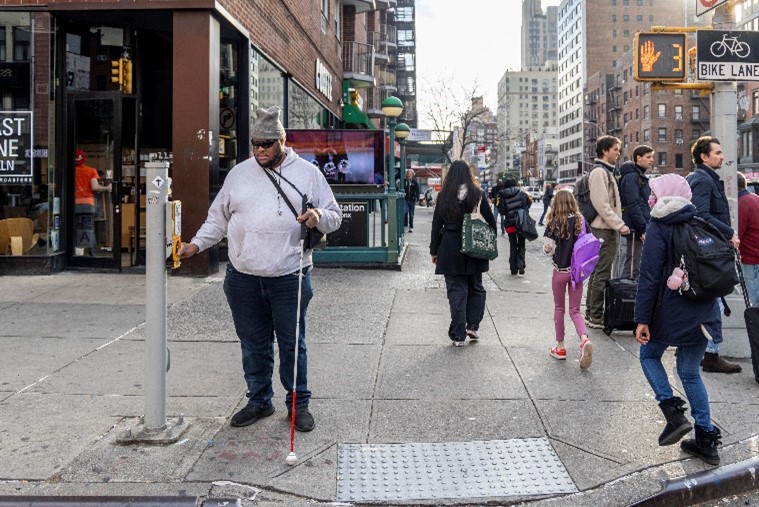
NYC DOT's Five-Year Accessibility Plan represents a concrete dedication to making a real impact, fostering equity, and championing accessibility for all, including people with disabilities. The plan focuses on key objectives: improving physical access, accessible services, workforce inclusivity, and effective communication.
Review NYC DOT's Five-Year Accessibility Plan Progress Report: 2024 to 2025 (pdf) Download NYC DOT's Five-Year Accessibility Plan (pdf)
Better Buses & Bus Stops
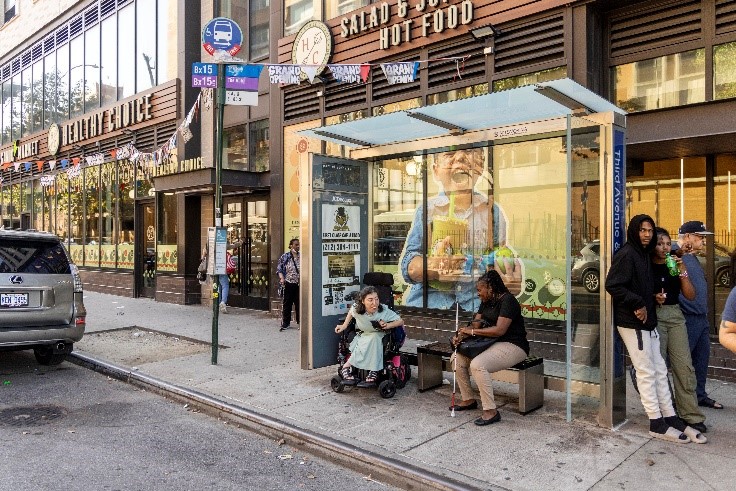
NYC DOT and the MTA are working together to improve the city's bus system by implementing bus priority improvements on routes throughout the city.
Learn how NYC DOT is working with the MTA to improve buses citywide
Bikes & Micromobility
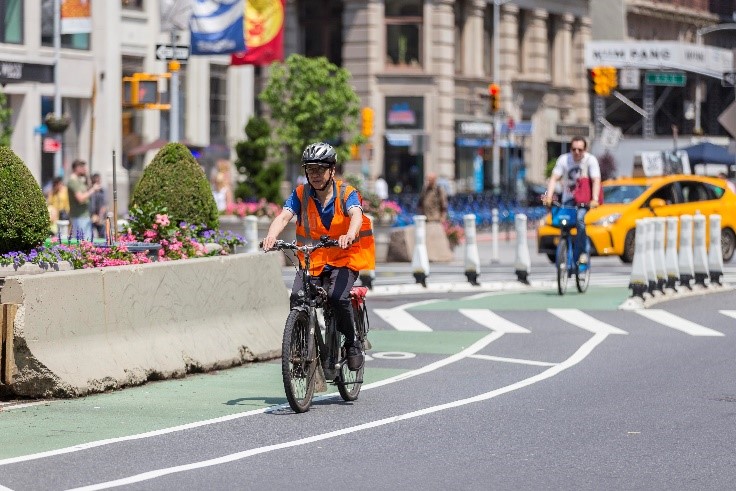
Cycling is one of the truly great ways to travel around New York City—biking is efficient, affordable, equitable, healthy, and environmentally friendly.
Bike Safety
Learn about NYC DOT cycling initiatives
E-Bikes in NYC
Learn about e-bikes and NYC DOT e-bike safety initiatives
Shared E-Scooter Program
E-Scooter share in NYC allows riders in the East Bronx and Eastern Queens to rent electric scooters (e-scooters) for short trips.
Carshare
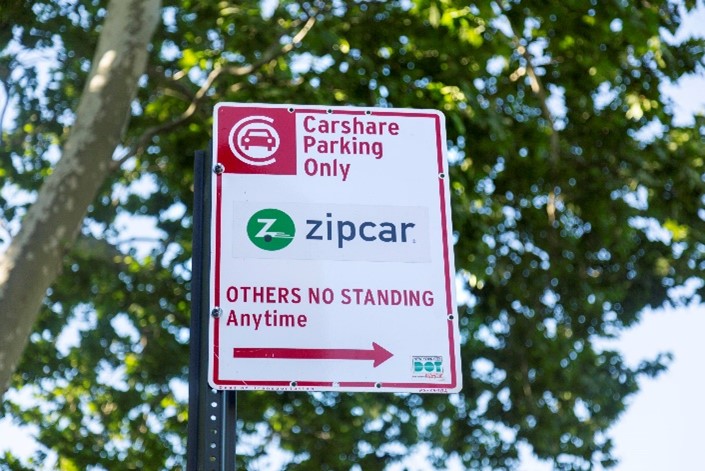
Carshare companies participating in the program provide mobility options for customers with disabilities. All companies are required to provide a vehicle with professionally installed hand controls to any Carshare member within 48 hours of the request.
Report a complaint about the carshare program or a parking space to NYC DOT online Learn more about Carshare in NYC
Outdoor Dining
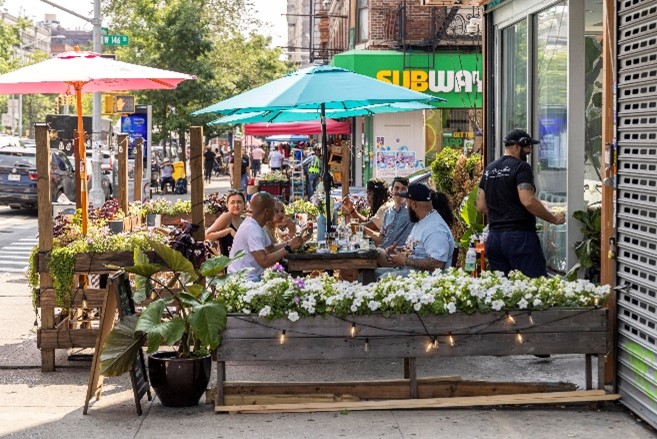
Dining Out NYC is New York City's permanent outdoor dining program. Eligible food service establishments may apply for outdoor dining in the roadway, sidewalk, or both.
Report an outdoor dining complaint to NYC 311 Learn more about outdoor dining
Parking Permits for People with Disabilities
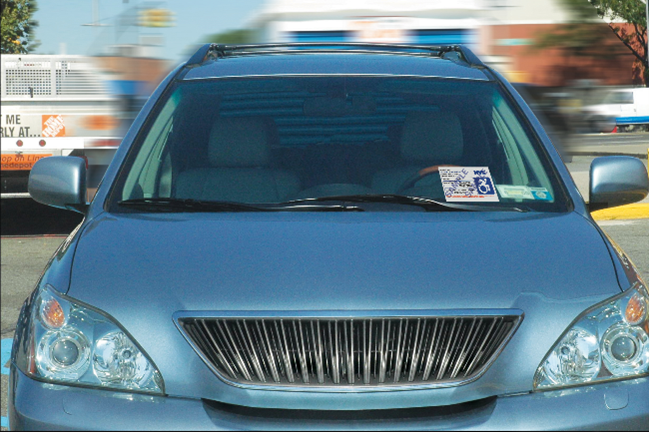
New York City issues two types of permits for people with disabilities: the New York City Parking Permit for People with Disabilities (NYC PPPD) and the New York State Parking Permit for Persons with Severe Disabilities (New York State Permit).
Learn about NYC's parking permits for people with disabilities Questions? Contact NYC DOT's parking permit customer service team at 718-433-3100 to speak with a representative or submit your inquiry online.
Safer Streets
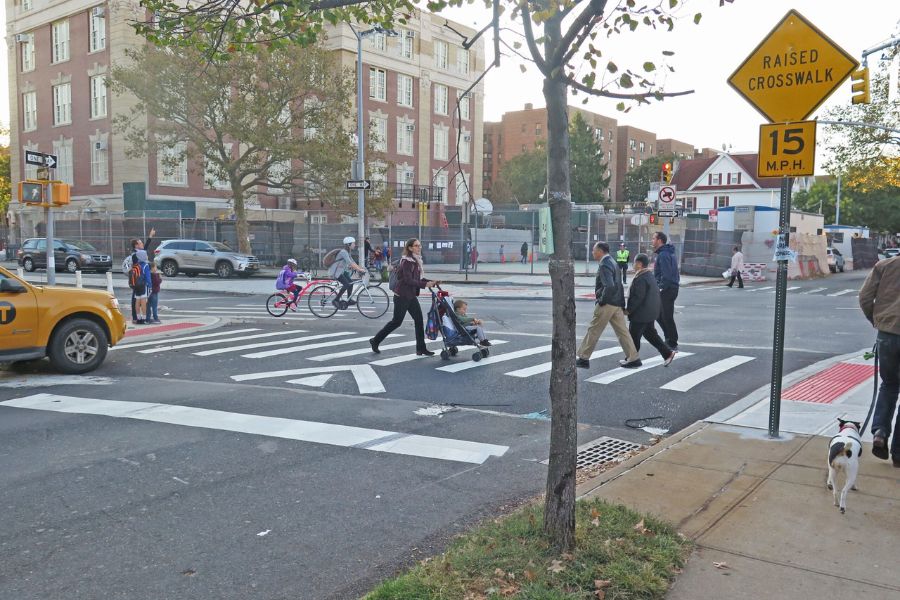
Safety is NYC DOT's priority in designing the city's streets and public spaces. NYC DOT's projects work to increase safety by reducing opportunities for illegal speeding and aggressive driving.
Learn more about what NYC DOT is doing to make streets and public spaces safe for everyone
Sidewalks & Pedestrian Ramps
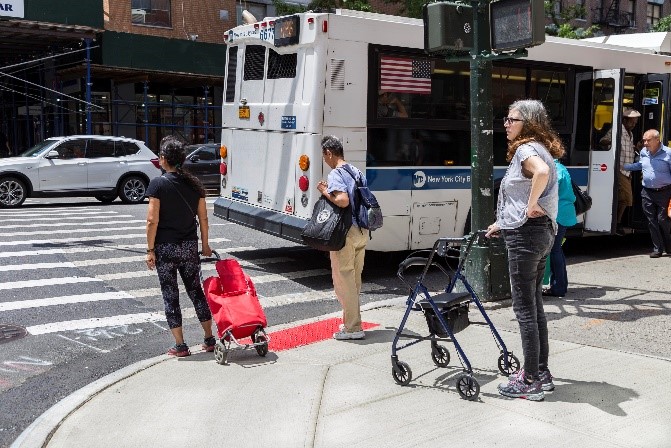
New York City has over 12,000 miles of sidewalks.
Sidewalk Maintenance
Smooth, even sidewalks free of defects and debris provide a safe place for New Yorkers to walk, use a wheelchair, or push a stroller or shopping cart. NYC DOT is committed to making our pedestrian space safe and accessible for all.
Learn more about sidewalk defects, inspections, and repairs
Pedestrian Ramps
Pedestrian ramps—sometimes referred to as 'curb cuts'—provide access on and off our streets and sidewalks and are an essential tool for all pedestrians.
Request a new pedestrian ramp via NYC311 Report a problem with a pedestrian ramp via NYC311 Learn more about the Pedestrian Ramp Program
Staten Island Ferry

NYC DOT operates the Staten Island Ferry, providing free service between Staten Island and Lower Manhattan every day of the week, year-round.
Street Closures
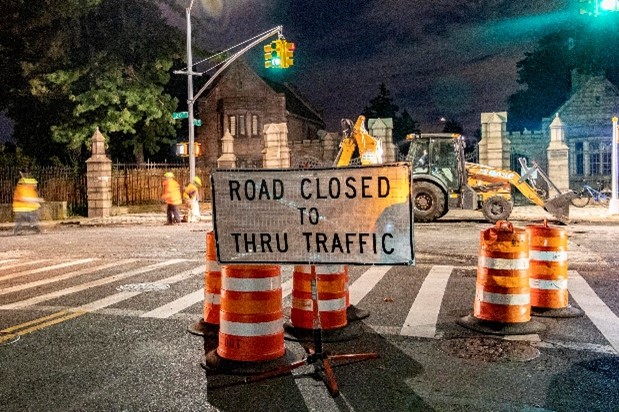
Every week NYC DOT posts traffic advisories with locations of planned street closures.
Traffic and Construction Alerts
NYC DOT releases traffic advisory details regarding permitted road construction and other events that will affect the flow of traffic. Schedules are subject to change due to inclement weather, security alerts and other emergencies.
Review the Weekly Traffic Advisory Subscribe to traffic advisory email updates Review our weekly resurfacing and sidewalk construction schedules
Special Events
NYC DOT does not issue permits for parades, block parties, major street fairs and other public street events. These types of closures are not included in our weekly traffic advisory.
Streetlights
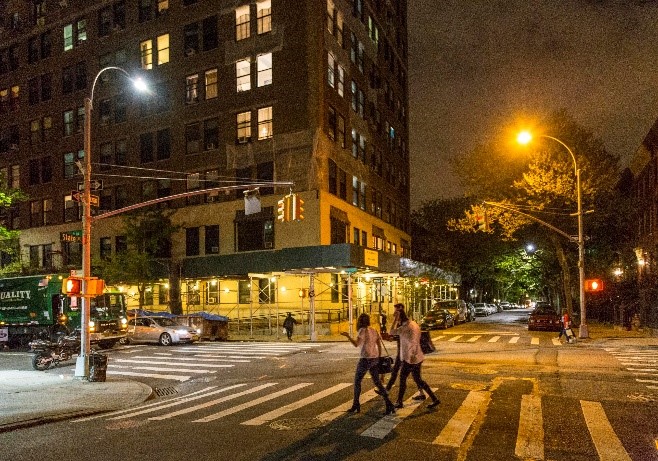
NYC DOT maintains streetlights throughout New York City.
Report a damaged streetlight to NYC DOT Learn more about streetlights in NYC
Traffic Signals
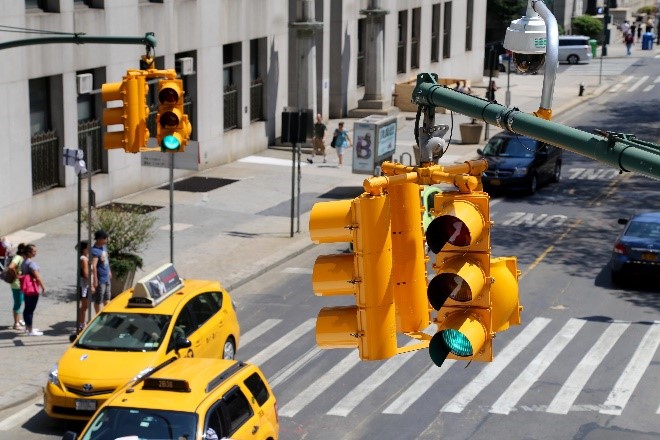
Traffic signals control the right-of-way for people at intersections.
To report a problem with a traffic or pedestrian signal, call 311.
Learn about how NYC DOT is using traffic signals to increase accessibility and pedestrian safety
Accessible Pedestrian Signals
Accessible Pedestrian Signals (APS) help pedestrians who are blind or have low vision cross the street. NYC is committed to installing and maintaining APS at every intersection across the city.
Call 311 or 212-NEW-YORK (212-639-9675) to report a problem with an APS, or Contact NYC DOT online to report a problem or request a new APS Learn more about APS in NYC
Transportation Resources & Contact Information
NYC DOT is committed to making our streets and our events inclusive. Contact information and additional NYC transportation resources are available below.
Mobility Management Program
NYC DOT's Mobility Management Program works to improve mobility for people with disabilities, older adults, low-income New Yorkers, and limited English speakers.
Learn more about the Mobility Management Program
Accessibility Accommodations at NYC DOT Events
For accommodation requests related to a scheduled NYC DOT program or activity, please reach out to the event contact or submit a request to our ADA Coordinator online at least three business days before the event.
Contact NYC DOT
If you have a transportation-related problem or question, contact NYC DOT by phone, mail, or by using an online form. Some transportation operations, such as the subways, airports and some bridges, are the responsibility of other agencies.
Contact information is available on the Contact NYC DOT webpage
Contact NYC DOT's ADA Coordinator
NYC DOT's policy is to comply with all applicable laws, including but not limited to, the Americans with Disabilities Act (ADA) and the Rehabilitation Act.
If you have an inquiry or complaint regarding an accessibility issue, contact NYC DOT's ADA Coordinator and Disability Service Facilitator.
Report a problem online to NYC DOT’s ADA Coordinator and Disability Service Facilitator Call NYC DOT's ADA Coordinator and Disability Service Facilitator at 929-441-9658
Additional NYC DOT Contacts
If you have a transportation-related problem or question, contact NYC DOT by phone, postal mail, or by using an online form.
Contact NYC DOT Commissioner online Contact Bronx Borough Commissioner Anthony Perez online or by calling 212-748-6680 Contact Brooklyn Borough Commissioner Keith Bray online or by calling 646-892-1350 Contact Manhattan Borough Commissioner online or by calling 212-839-6210 Contact Queens Borough Commissioner Nicole Garcia online or by calling 212-839-2510 Contact Staten Island Borough Commissioner Roseann Caruana online or by calling 212-839-2400
Grievance Policy
NYC DOT does not discriminate on the basis of disability in the operation of its programs, services, and activities.
Learn about our Grievance Procedure (pdf) Learn about New York City's nondiscrimination policy (pdf)
Other Transportation Agencies & Services
In NYC there are transportation programs and services offered by other public agencies. Below are links to key accessibility services provided by other public agencies.
